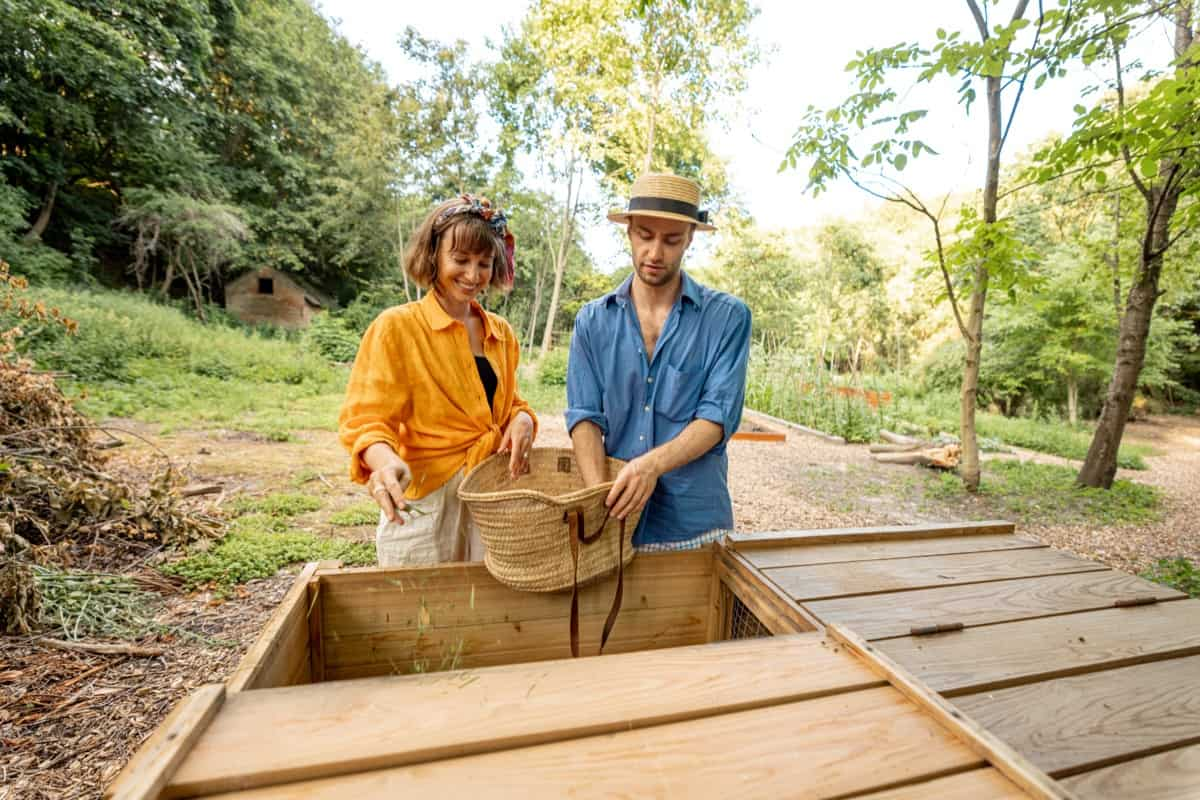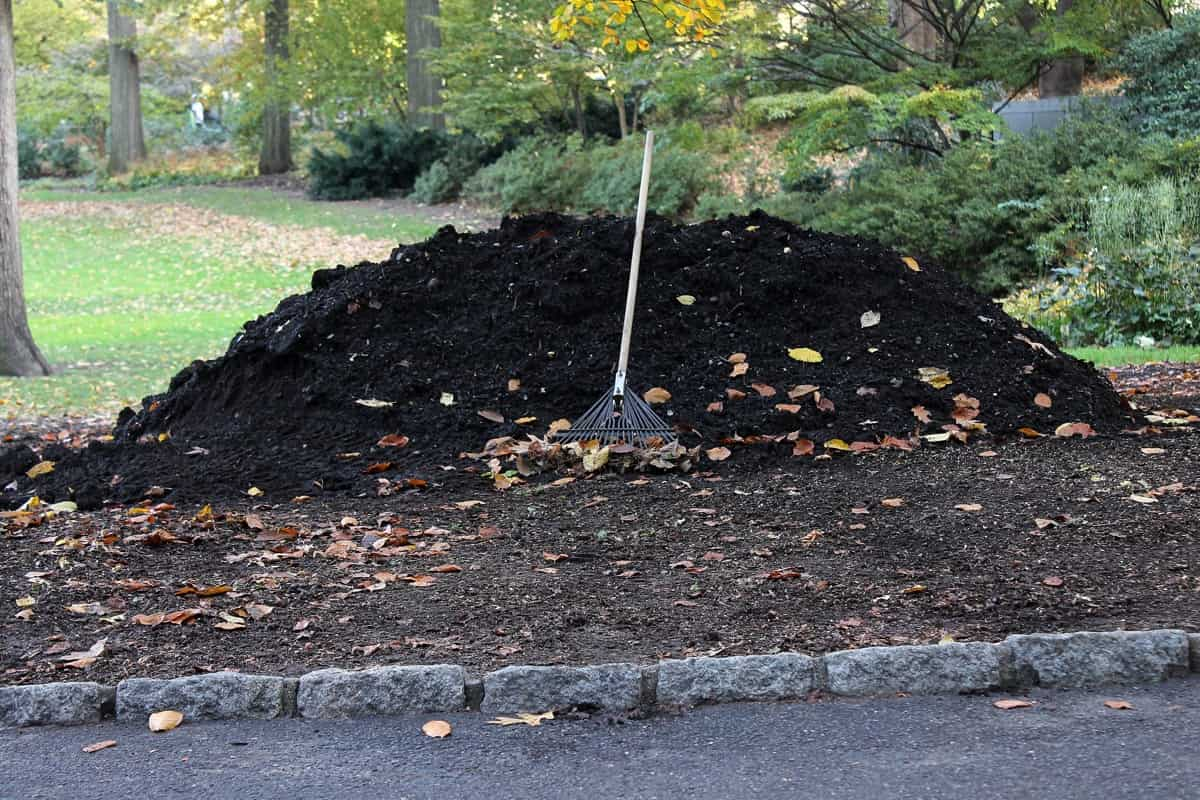Composting leaves is one of the best ways to create a sustainable environment in your garden. Not only does it provide essential nutrients for your plants, but it also helps improve the soil structure and reduces waste. Composting dry leaves is not hard, but there are certain steps you must take to get the most out of your compost pile. Composted leaves also add nutrients and organic matter to the soil, which helps to promote plant growth.

How to Compost Dry Leaves in a Bin or Pile
What Is Composting?
Composting is decomposing organic matter into a rich soil amendment, such as leaves and other plant material. Composting speed and efficiency can be increased by shredding the leaves before adding them to the bin or pile. While dry leaves are excellent composting material, they do not break down as quickly as green leaves. For this reason, mixing dry and green leaves in your bin or pile is best.
Benefits of Composting Dry Leaves
- Adding essential nutrients and organic matter to the soil
- Improving soil structure
- Increasing water retention in the soil
- Reducing the need for chemical fertilizers
- Attracting earthworms and other beneficial organisms
How Do You Store Dried Leaves for Compost?
- Collect leaves on a sunny day once they’ve dried well. Store in a breathable bag or container and put it near your compost, making sure to protect it from the rain. Mix leaves in when you add food waste throughout the winter.
- Ensure they are completely dry before storing them. If they are even slightly damp, they will start to decompose and will not be good for your compost pile.
- Store them in a dry, dark place. A garage or shed is ideal.
- If you have a lot of plant leaves, you may want to invest in a leaf blower. This will help you get them into storage bags quickly and easily.
Steps to Compost Dry Leaves in a Bin or Pile
- Add leaves to a compost pile and keep them up in the corner of your yard.
- Top the leaves with nitrogen-rich grass clippings, cottonseed meal, food waste, or manure.
- Build the pile up until it’s 3 feet tall and wide. A good rule is to use four parts leaves per one-part nitrogen.
- Then, turn the compost once a month. But, in winter, the composting often stop because of the cold temperatures. So, turn your compost in winter if it’s insulated.
- When you turn your compost, check for moisture. If you spot dry patches, and then add water. If the compost smells rotten, dry it with leaves, straw, or sawdust.
- Continue moisture-monitoring compost until it’s ready. Finished compost is dark in color, crumbly in texture, and smells earthy. If you turn the pile, you can have compost in a couple of months; if you don’t turn it in the winter season, it can take up to a year.
In case you missed it: Garden Soil Preparation: For Vegetables, Fruits, Flowers, and Herbs

Best Plants to Grow with Compost Made from Dry Leaves
- Tomatoes – Tomatoes love nitrogen-rich compost, so dry leaves are the perfect addition to their growing environment.
- Peppers – Peppers benefit from nitrogen-rich compost. The added nutrients will help them grow bigger and more flavorful fruits.
- Cucumbers – Cucumbers are another vegetable that does well with compost made from dry leaves. The extra nutrients will help them produce more fruit.
- Squash – All varieties of squash benefit from the added nutrients in compost made from dry leaves. You’ll notice bigger and healthier fruits when you add this compost to their growing environment.
- Melons – Melons are heavy feeders and will benefit greatly from the added nutrients in dry leaf compost. You’ll see an increase in both size and flavor of your melons when you use this type of compost in their growing environment.
Tips for Successful Composting Dry Leaves
- Start with a layer of dry leaves at the bottom of your bin or pile.
- Choose the right location for your compost bin or pile. It should be in a sunny spot that is out of foot traffic.
- Shred or chop the leaves before adding them to the bin or pile. This will help them decompose more quickly.
- Add other organic materials to the bin or pile, such as kitchen scraps and grass clippings, to help accelerate the decomposition process.
- Keep the bin or pile moist but not wet by adding water as needed.
- Turn the bin or pile periodically to aerate it and speed up decomposition.
- If you’re composting in a bin or pile, make sure the leaves are chopped into smaller pieces, so they decompose more quickly. You’ll also want to add some green material, such as grass clippings or kitchen scraps, to help speed up the process.
- Be sure to turn your bin or pile regularly, and keep it moist but not too wet – too much moisture will cause the leaves to break down more slowly.
Key Ways to Compost Dry Leaves in a Bin or Pile
- Aim for a 30:1 ratio of carbon to nitrogen. Carbon comes from dead leaves, while nitrogen comes from green waste like grass clippings. This 30:1 ratio is key to ensuring your compost breaks down properly.
- Shred or chop your leaves before adding them to the bin or pile. This will help them break down more quickly.
- Add water to the bin or pile as needed. The leaves should be moist but not soggy.
- Turn the bin or pile every few weeks to aerate it and then help speed up the composting process.
In case you missed it: 9 Sustainable Gardening Ideas: At Home for Beginners

Conclusion
Composting dry leaves is a great method to add nutrients and organic matter to the garden. It is also a sustainable way to dispose of leaves, as they will eventually break down and benefit your plants. Composting dry leaves is an excellent way to start a sustainable garden while still taking care of the environment.
- Feed Your Flock for Less: Top 10 Tips to Save on Chicken Feed
- Ultimate Guide to Ossabaw Island Hog: Breeding, Raising, Diet, and Care
- Hatching Answers: The Top 10 Reasons Your Chickens Aren’t Laying Eggs
- Eggs and Economics: Breaking Down the Cost of Raising Backyard Chickens
- Defend Your Greens: Proven Methods to Keep Iguanas Out of Your Garden
- Ultimate Guide to Cinnamon Queen Chicken: A Comprehensive Guide for Beginners
- Ultimate Guide to California Tan Chicken: Breeding, Raising, Diet, Egg-Production and Care
- Ultimate Guide to Marsh Daisy Chicken: Breeding, Raising, Diet, and Care
- 10 Types of Chicken Farming Businesses You Can Start for Profits